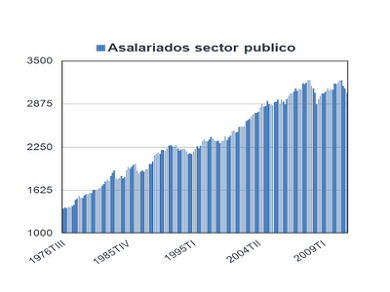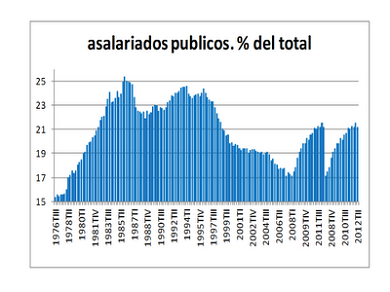

The democratic Transition in Spain began with minimum levels of public sector jobs, which probably was insufficient. But then, numbers scaled up. Let’s have a look at the above graphs, that’s public sector workers by thousands and the percentage this payroll represents over the total employed people in the country.
My explanation of what has happened isn’t politically correct: political patronage and despotism are behind the dramatic spike in public sector hiring. Party politics strategists found out that by bending the law they could sit their affiliates and followers in chairs of all kinds, particularly on the top offices.
Where judges, attorneys, professional advisers and assistants should have been called, friends of friends and even relatives were brought in, most of them without any other qualification than their loyalty and obedience.
Today, Spain’s public administrations are poorly managed and extremely oversized. Civil servants aren’t to be blamed.
What both graphs tell us is that the proportion of public workers over the total of employees only decreases when private hiring recovers. Public sector hiring only slowed down at the start point of the crisis.
There is another factor to take into account. The competition between public and private sectors is damaging the economy, since the public administrations has proved to be prone to increase salaries in excess and against all efficiency criteria.





Be the first to comment on "How party politics ruined Spain’s public sector in two charts"